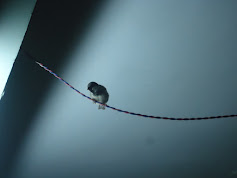The House sparrow (Passer domesticus) சிட்டுக்குருவி
World Sparrow Day is celebrated on March 20 every year. It a day to raise awareness and protect the common house sparrows, which are not so commonly seen now due to increasing various pollutions. among them, noise pollution considered as the worst pollutant affecting the house sparrows.
In Madipakkam Lakshmi Nagar we have noticed some House sparrows regularly late in 2020. But in Medavakkam even though we have observed Silverbill, Prinia, Sunbird, Munia, and Tailor birds, we have not noticed any House sparrow yet. our search is on we will surely find some house sparrow soon in Medavakkam Marshland too. since we don't have photo of Madipakkam sparrow we have used our stock photos from 2012.
Here we would like to showcase the video of House sparrow from Tirunelveli District
We have set up two-three sparrow houses in our home where many sparrow families are residing, often they play in our balcony and plants near the balcony... this video was taken from our balcony when they were playing...
Feed sparrows, water sparrows, and give space for sparrows in your home. this should be the motto taken on The world Sparrow day 2021...
Hope everyone follows and protects sparrows from extinction...
Female House Sparrow
The house sparrow (Passer domesticus) is a bird of the sparrow family Passeridae, found in most parts of the world. It is a small bird that has a typical length of 16 cm (6.3 in) and a mass of 24–39.5 g (0.85–1.39 oz). Females and young birds are coloured pale brown and grey, and males have brighter black, white, and brown markings. One of about 25 species in the genus Passer, the house sparrow is native to most of Europe, the Mediterranean Basin, and a large part of Asia. Its intentional or accidental introductions to many regions, including parts of Australasia, Africa, and the Americas, make it the most widely distributed wild bird.































